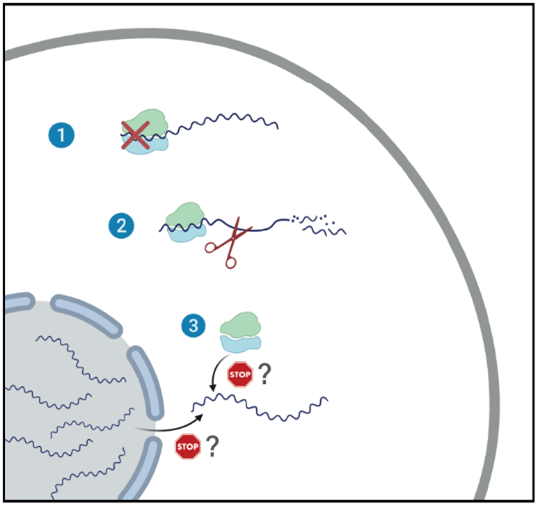Gene expression in viral infection
Viruses are, by definition, fully dependent on the cellular translation machinery and develop diverse mechanisms to manipulate and co-opt it for their own benefit. The recent pandemic virus, SARS-CoV-2, like many other viruses, leads to shutoff of host gene expression, while HCMV does not. Our group is utilizing high throughput sequencing-based approaches to quantitatively measure transcription, transcript localization and stability and translation. Two key directions are: 1. characterization of viral coding capacity, dynamics of viral gene expression and viral gene functions; 2. exploring how viruses commandeer the cellular gene expression machinery and how this affects the cell’s ability to respond to infection.
At the onset of the COVID pandemic we applied our experimental framework to generate a high-resolution map of SARS-CoV-2 coding regions- we quantified the expression of viral proteins and identified unannotated open reading frames (Finkel et al., Nature, 2021a). We next uncovered SARS-CoV-2 uses a multipronged approach to block host protein synthesis, and we showed the importance of this interference for the virus's ability to disarm host defenses (Finkel et al., Nature 2021b and Fisher et al., Cell Report 2022).
HCMV is a large virus with ~200 canonical genes that evolved alongside humans for many years. We studied the kinetics of viral gene expression (Rozman et al., Cell Reports 2022), the expression and function of viral long noncoding RNAs (Tai-Schmiedel et al., Plos Pathogens 2020) as well as the coding capacity of related beta-herpes viruses (Finkel et al, eLife 2020). We also study interactions with the host gene expression machinery, for example the the functional impact of the central RNA modification, m6A, in infection (Winkler et al. Nat. Immunol. 2019, Shulman and Stern-Ginossar Nat. Immunol. 2020).

SARS-CoV-2 suppresses host gene expression through a multi-pronged approach: 1. Global translation reduction; 2. Degradation of cytosolic cellular mRNAs; 3. Block in translation of newly synthesized cellular mRNAs, through inhibition of nuclear mRNA export.
